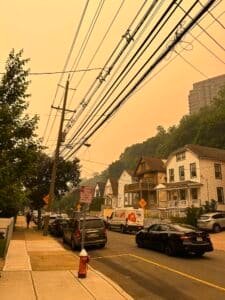As a professional mold remediation contractor, we have seen the devastating effects of water damage on drywall. Not only can it compromise the structural integrity of your walls, but it can also lead to the growth of mold and other harmful bacteria. In this blog post, I will discuss the signs of water damage in walls, how to tell if you have water damage, and the steps you can take to repair drywall from water damage.
Signs of Water Damage in Walls
Water damage can have several telltale signs on your walls. It is essential to be able to identify these signs early on to prevent further damage and expensive repairs. Some common signs of water damage in walls include:
- Discoloration: If you notice dark stains or discoloration on your walls, it could be a sign of water damage. This is often caused by water seeping through the wall and leaving behind minerals and dirt.
- Peeling or bubbling paint: Water can cause the paint on your walls to peel or bubble, especially around the edges. This is because the water weakens the adhesion between the paint and the drywall.
- Musty smell: If your walls have a musty or damp smell, it could indicate the presence of water damage. This smell is often caused by mold growth, which thrives in moist environments.
- Visible mold growth: Mold can start growing on walls within 24-48 hours of water damage. Look out for dark spots or patches of fuzzy growth on your walls.
- Soft or spongy walls: If your walls feel soft or spongy to the touch, it could be a sign of water damage and weakened drywall.
How to Tell if You Have Water Damage
Water damage can be sneaky and often goes unnoticed until it becomes a significant issue. However, there are a few ways to tell if you have water damage in your walls:
- Inspect your walls regularly for any signs of water damage.
- Check for leaks from pipes, appliances, or the roof.
- Monitor your water bill for any sudden increases, which could indicate a hidden leak.
- Pay attention to any changes in the texture or appearance of your walls.
- If you suspect water damage, it is best to call a professional mold remediation contractor to conduct a thorough inspection.
Steps to Repair Drywall from Water Damage
If you have identified water damage on your walls, it is essential to take immediate action to prevent further damage and potential health risks. Here are the steps involved in repairing drywall from water damage:
1. Identify the source of the water damage
The first step in repairing drywall from water damage is to identify and fix the source of the problem. This could be a leaky pipe, a faulty appliance, or a leak in the roof. If the source is not fixed, the water damage will continue to occur, and any repairs made will be temporary.
2. Remove the damaged drywall
If the drywall is severely damaged or has mold growth, it will need to be removed and replaced. This process involves cutting out the damaged section of drywall and patching it with a new piece. It is essential to wear protective gear, such as a mask and gloves, when removing moldy drywall.
3. Dry out the affected area
Before replacing the drywall, the affected area must be thoroughly dried out. This can be done by using fans, dehumidifiers, and opening windows to improve air circulation. It is crucial to ensure that the area is completely dry to prevent mold growth.
4. Repair the drywall
Once the area is dry, the new piece of drywall can be installed. This involves cutting the new piece to fit the hole and securing it with drywall screws. The seams can then be covered with joint compound and sanded down for a smooth finish.
5. Paint and finish
To complete the repair process, the new drywall section can be painted to match the rest of the wall. It is essential to use a mold-resistant primer and paint to prevent future mold growth.
Conclusion
Water damage to drywall can be a challenging and costly problem to deal with. However, by being able to identify the signs of water damage and taking immediate action, you can prevent further damage and ensure the safety of your home and family. If you are unsure about repairing drywall from water damage, it is best to seek the help of a professional mold remediation contractor to ensure the job is done correctly and effectively.



